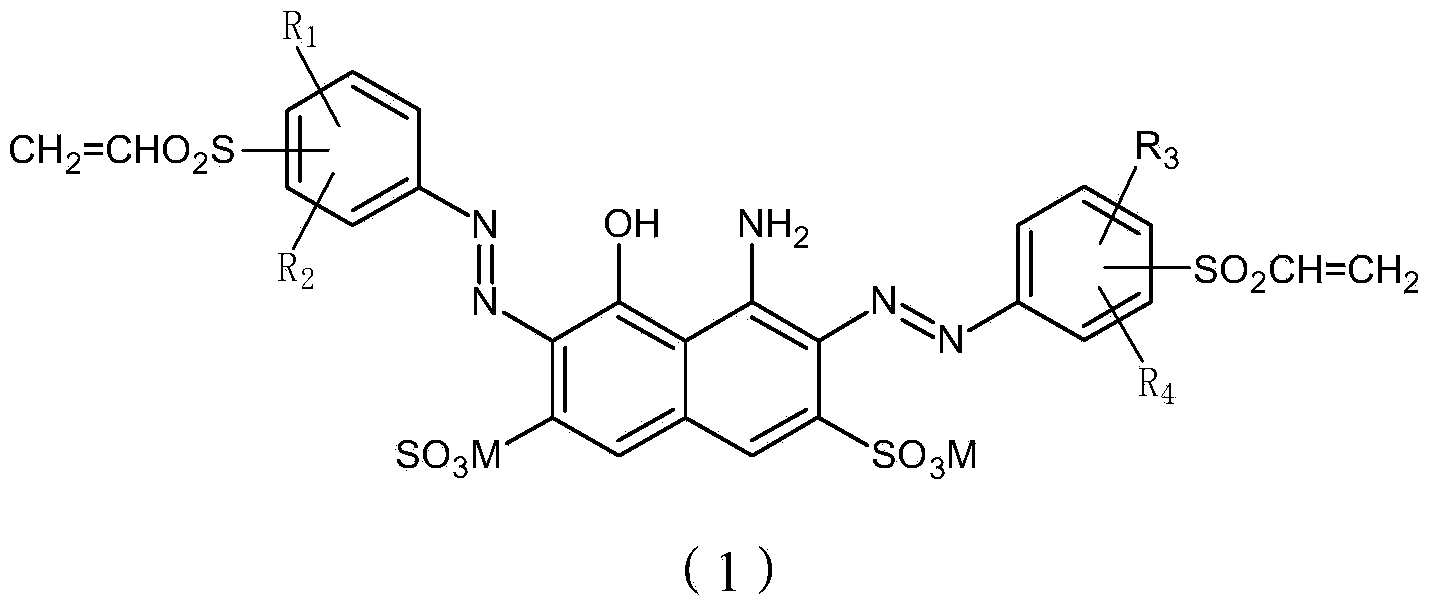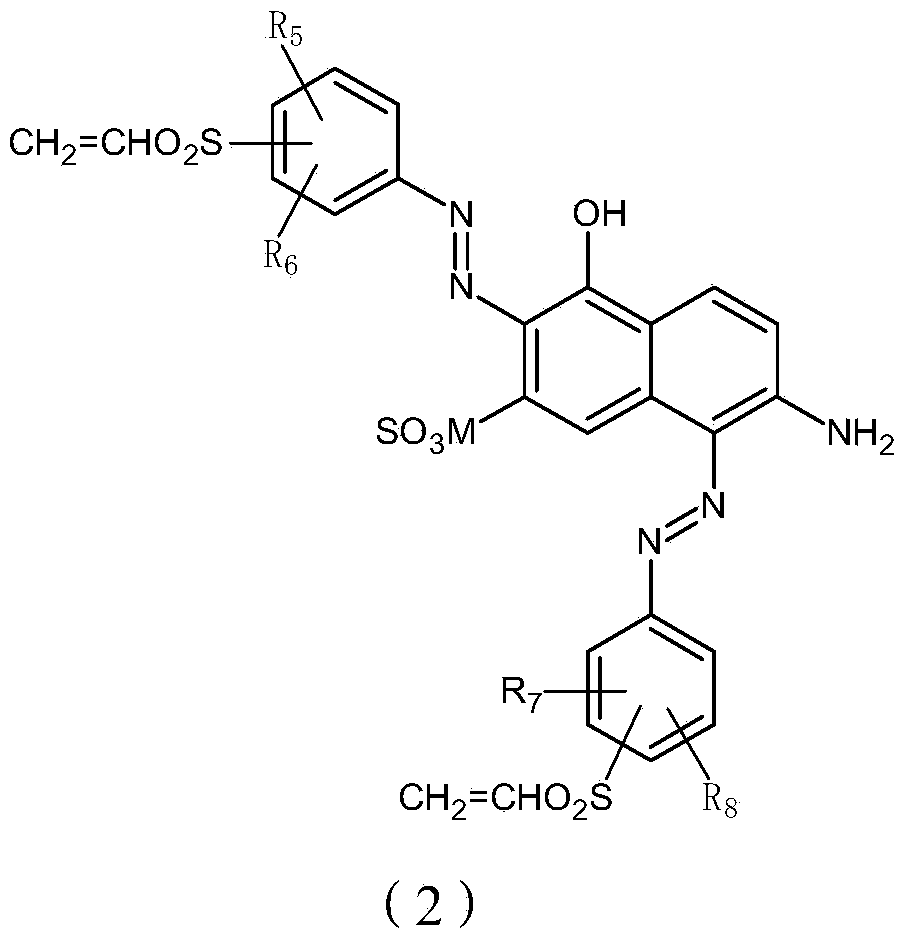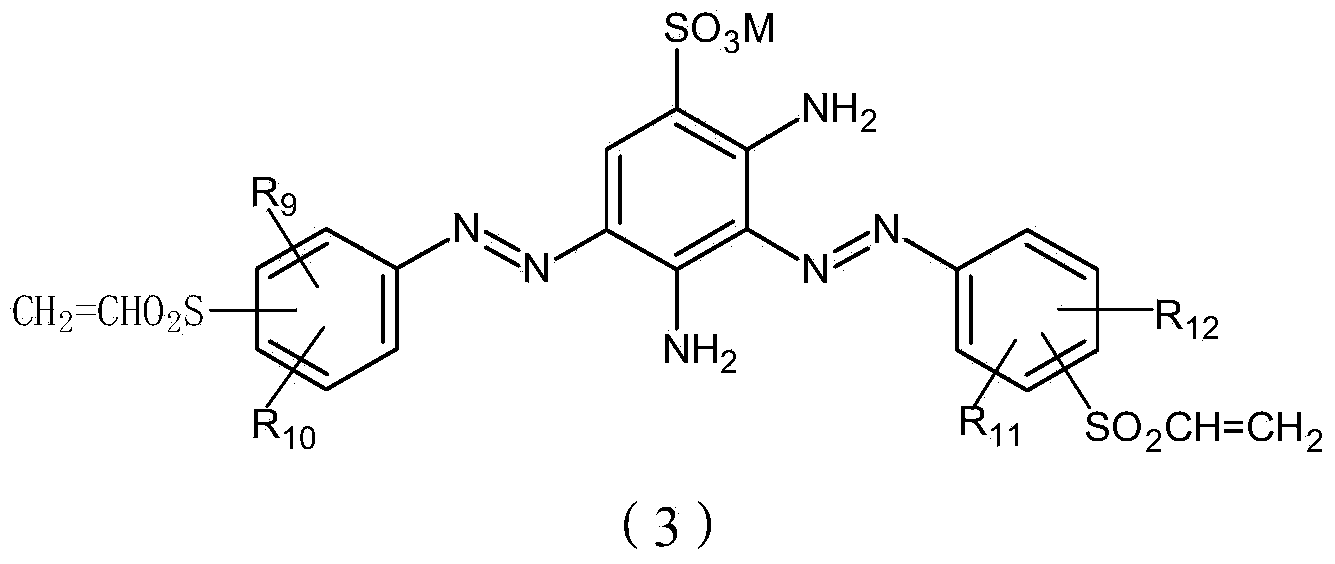Low-temperature composite activated black dye and application thereof
A technology of reactive dyes and reactive blacks, used in organic dyes, dyeing methods, textiles and papermaking, etc., to save energy, reduce hydrolysis rate, and improve absolute color fixing rate.
- Summary
- Abstract
- Description
- Claims
- Application Information
AI Technical Summary
Problems solved by technology
Method used
Image
Examples
Embodiment 1
[0032] A low-temperature composite reactive black dye, composed of reactive dye A shown in formula (1), reactive dye B shown in formula (2), reactive dye C shown in formula (3), and reactive dye C shown in formula (4) Reactive dye D, reactive dye E shown in formula (5) and auxiliary agents are compounded. The contents of reactive dyes A, B, C, D, E and auxiliary agents in every 100g of low-temperature composite reactive black dye are shown in Table 1.
[0033]
[0034]
[0035]
[0036] From formula (1) to formula (5) -SO 2 CH=CH 2 Both by -SO 2 CH 2 CH 2 OSO 3 It is obtained by degreasing Na and soda ash, and the composition of substituents is shown in Table 2.
[0037] In the composite reactive black dye composition of the present invention, the compounding method of each reactive dye is not particularly limited, can adopt: manufacture each reactive dye respectively, then carry out the method of compounding; The reaction liquid that contains each reactive dye g...
Embodiment 2
[0041] A low-temperature composite reactive black dye, composed of reactive dye A shown in formula (1), reactive dye B shown in formula (2), reactive dye C shown in formula (3), and reactive dye C shown in formula (4) Reactive dye D, reactive dye E shown in formula (5) and auxiliary agents are compounded. The contents of reactive dyes A, B, C, D, E and auxiliary agents in every 100g of low-temperature composite reactive black dye are shown in Table 1. From formula (1) to formula (5) -SO 2 CH=CH 2 Both by -SO 2 CH 2 CH 2 OSO 3 It is obtained by degreasing Na and soda ash, and the composition of substituents is shown in Table 2.
[0042] Application of a low-temperature composite reactive black dye for dyeing pure cotton black. The specific dyeing steps are as follows: bath ratio 1:30, adding 10% of the dye and sodium hexametaphosphate by fabric weight at room temperature, the amount of sodium hexametaphosphate 100g / L, run for 8min, heat up to 50°C at a heating rate of 3°C...
Embodiment 3~5
[0044] The compositions of the low-temperature composite reactive black dyes of Examples 3 to 5 are shown in Table 1, and the compositions of the substituents in formula (1) to formula (5) are shown in Table 2.
[0045] Table 1: The proportions of each component of the low-temperature composite reactive black dyes of Examples 1 to 5
[0046]
[0047] Table 2: Composition of substituents in Examples 1 to 5
[0048]
[0049] R 5
PUM
 Login to View More
Login to View More Abstract
Description
Claims
Application Information
 Login to View More
Login to View More - R&D
- Intellectual Property
- Life Sciences
- Materials
- Tech Scout
- Unparalleled Data Quality
- Higher Quality Content
- 60% Fewer Hallucinations
Browse by: Latest US Patents, China's latest patents, Technical Efficacy Thesaurus, Application Domain, Technology Topic, Popular Technical Reports.
© 2025 PatSnap. All rights reserved.Legal|Privacy policy|Modern Slavery Act Transparency Statement|Sitemap|About US| Contact US: help@patsnap.com



